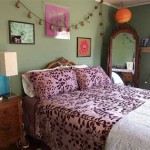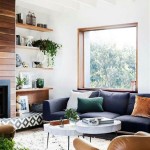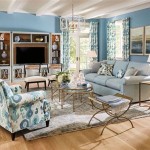Room Decor Canvas Painting: DIY Project Guide
Elevating a room's aesthetic through art doesn't necessitate expensive gallery acquisitions. Creating canvas paintings offers a personalized and budget-friendly solution, empowering individuals to infuse their living spaces with unique artistic expressions. This article provides a comprehensive guide to DIY canvas painting for room décor, covering essential materials, techniques, and design ideas.
Necessary Materials and Preparation
Prior to commencing any painting project, assembling the appropriate tools and materials is crucial for a smooth and successful process. This includes selecting the right canvas, paint, brushes, and ancillary supplies. Proper preparation of the canvas and workspace ensures optimal results and enhances the overall painting experience.
The cornerstone of any canvas painting is, naturally, the canvas itself. Canvases are typically made of cotton or linen, stretched over a wooden frame. Cotton canvases are more affordable and suitable for beginners, while linen canvases offer a smoother surface and greater durability, making them ideal for more advanced techniques. Canvas size depends entirely on personal preference and the intended location of the finished painting. Smaller canvases (e.g., 8x10 inches) are suitable for accent pieces in smaller rooms or for creating a gallery wall. Larger canvases (e.g., 24x36 inches or larger) can serve as focal points in larger spaces.
The choice of paint significantly impacts the final appearance and longevity of the artwork. Acrylic paints are a popular choice for canvas painting due to their versatility, fast-drying properties, and water-based formula, which simplifies cleanup. Oil paints offer richer colors and a longer drying time, allowing for greater blending and manipulation of the paint, but they require solvents for cleanup. Watercolor paints are less common for large canvas paintings but can be used for creating delicate and translucent effects, often in combination with other mediums. Consider the desired effect and painting experience when selecting the appropriate paint type.
A variety of brushes are essential for achieving different textures and effects. Flat brushes are ideal for covering large areas and creating smooth, even surfaces. Round brushes are suitable for detail work and creating fine lines. Filbert brushes, with their rounded edges, are versatile and can be used for blending and creating soft edges. Fan brushes can be used to blend paints, create textures, and depict foliage. A selection of brush sizes is also recommended, from small detail brushes to larger brushes for covering broader areas.
Beyond the core materials, several ancillary supplies enhance the painting process. An easel provides a stable and ergonomic surface for painting, reducing strain and improving posture. A palette is necessary for mixing paints and keeping them organized. A palette knife can be used for mixing paints, applying thick layers of paint (impasto), and creating textures. Water, paint thinner (if using oil paints), and rags are essential for cleaning brushes and removing excess paint. Masking tape can be used to create crisp lines and geometric shapes. A drop cloth or newspaper protects the work surface from paint spills.
Canvas preparation involves priming the surface to create a uniform and receptive base for the paint. Most pre-stretched canvases are already primed with gesso, a white acrylic primer. However, applying an additional layer or two of gesso can improve the paint adhesion and color vibrancy. Apply gesso in thin, even coats, allowing each coat to dry completely before applying the next. Lightly sanding the primed surface with fine-grit sandpaper can further smooth the surface, creating an ideal canvas for painting.
Workspace preparation involves setting up a well-lit and ventilated area where one can comfortably work. Covering the work surface with a drop cloth or newspaper protects against paint spills. Gathering all necessary materials and arranging them within easy reach streamlines the painting process and minimizes interruptions. Ensuring adequate ventilation, especially when using oil paints or solvents, is crucial for maintaining a safe and healthy environment.
Painting Techniques and Methods
Mastering various painting techniques empowers individuals to create diverse textures, effects, and visual styles. This section explores several fundamental painting techniques suitable for canvas art, including layering, blending, dry brushing, and stippling. Understanding and practicing these techniques expands one's artistic repertoire and allows for greater control over the final appearance of the painting.
Layering involves applying multiple layers of paint to build depth, dimension, and complexity. This technique can be used to create subtle variations in color, texture, and value. Start with a thin base layer and gradually add subsequent layers, allowing each layer to dry partially before applying the next. Layering can be used to create realistic effects, such as shadows and highlights, or to create abstract textures and patterns.
Blending is the process of seamlessly merging two or more colors together to create smooth transitions and gradients. This can be achieved by using a soft brush to gently blend the colors together while they are still wet. Alternatively, a blending medium can be added to the paint to extend its drying time and facilitate blending. Blending is essential for creating realistic skin tones, smooth landscapes, and subtle color transitions.
Dry brushing involves using a dry brush with a small amount of paint to create a textured, scratchy effect. This technique is particularly useful for depicting rough surfaces, such as wood, stone, or grass. Dip the brush lightly into the paint and wipe off any excess paint onto a paper towel before applying it to the canvas. Apply the paint with light, short strokes, allowing the texture of the brush to show through.
Stippling involves applying small dots of paint to the canvas to create texture and shading. This technique is often used to depict foliage, granular surfaces, or pointillistic effects. Use a small, round brush and dab it onto the canvas, creating a pattern of dots. Vary the size and density of the dots to create different effects.
Other techniques to explore include impasto (applying thick layers of paint with a palette knife to create texture), glazing (applying thin, transparent layers of paint to modify the underlying colors), and scumbling (applying a thin, broken layer of paint to create a hazy or textured effect). Experimenting with different techniques allows for personal expression and the development of a unique artistic style.
Inspirational Design Ideas for Room Decor
The possibilities for canvas painting designs are limitless, ranging from abstract expressions to representational depictions. This section presents a variety of design ideas suitable for different room styles and personal preferences, offering inspiration for creating unique and personalized wall art. These ideas encompass color palettes, subject matters, and artistic styles, providing a starting point for creative exploration.
Abstract paintings can add a modern and contemporary touch to any room. Experiment with different color combinations, shapes, and textures to create visually stimulating and thought-provoking pieces. Consider using geometric shapes, organic forms, or splattered paint techniques to achieve a unique and abstract aesthetic. Abstract art can complement a minimalist or eclectic interior design style.
Landscape paintings can bring the beauty of the outdoors into the interior space. Depict serene landscapes, vibrant sunsets, or majestic mountains to create a calming and visually appealing ambiance. Use watercolor techniques to create delicate and atmospheric landscapes or acrylic paints to create bold and colorful scenes. Landscape paintings can complement a rustic, traditional, or bohemian interior design style.
Floral paintings can add a touch of elegance and femininity to any room. Depict individual flowers, bouquets, or floral patterns to create a vibrant and cheerful atmosphere. Use bright and bold colors to create a striking statement or soft and pastel colors to create a more subtle and romantic effect. Floral paintings can complement a traditional, romantic, or shabby chic interior design style.
Geometric paintings can add a modern and structured element to a room. Use clean lines, geometric shapes, and bold color combinations to create visually striking and contemporary pieces. Experiment with different geometric patterns, such as stripes, triangles, or squares, to achieve a unique and personalized look. Geometric paintings can complement a minimalist, modern, or Scandinavian interior design style.
Motivational quote paintings can add a personal and inspiring touch to a room. Choose a favorite quote or saying and paint it onto a canvas using a stylish font and color palette. Consider using calligraphy techniques or stenciling to create a professional and polished look. Motivational quote paintings can complement any interior design style and add a positive and uplifting message to the space.
Personalized silhouette paintings can add a unique and sentimental touch to a room. Trace a silhouette of a loved one, pet, or favorite object onto a canvas and paint it in a contrasting color. Consider using metallic paints or glitter to add a touch of glamour. Personalized silhouette paintings can complement any interior design style and add a personal and meaningful element to the space.
Ultimately, the best design idea for a DIY canvas painting is one that reflects personal style and complements the existing décor. Experiment with different techniques, color palettes, and subject matters to discover one's artistic voice and create truly unique and personalized wall art.

A Look At Some Amazing Diy Canvas Art Ideas Printyo

20 Easy Canvas Painting Ideas For Your Home Gathered

Diy Canvas Ideas 50 For Your Wall Mod Podge Rocks

Canvas Painting Ideas For Tricky Spaces Wall Art Prints

Painting Ideas 36 Easy Diy Canvas Paintings To Make Art At Home Decor Artistic

20 Easy Canvas Painting Ideas For Your Home Gathered

Aesthetic Home Decoration Decor Art Wall Ta In 2025 Canvas Living Room Multi Painting

Canvas Painting Ideas And Diy Abstract Art The Fox She

10 Diy Innovative Wall Art Decor Ideas Arttree Com Au

60 Easy Square Canvas Painting Ideas For Home Decor Cp
Related Posts







